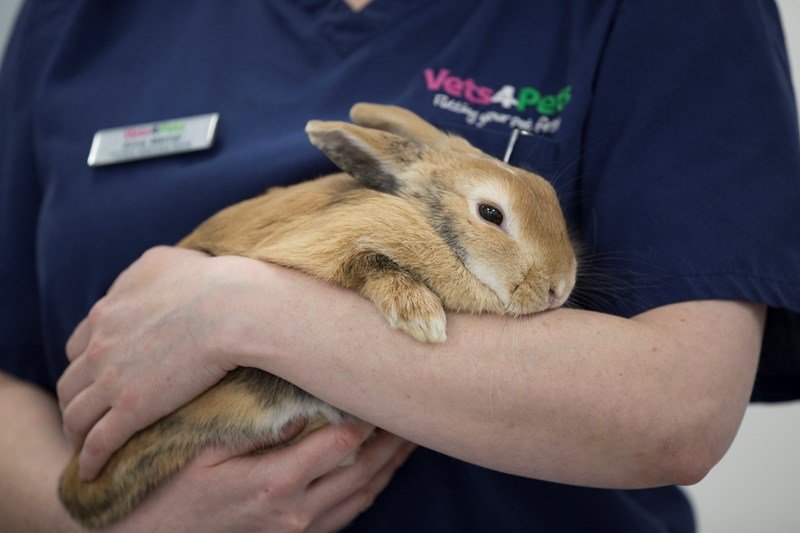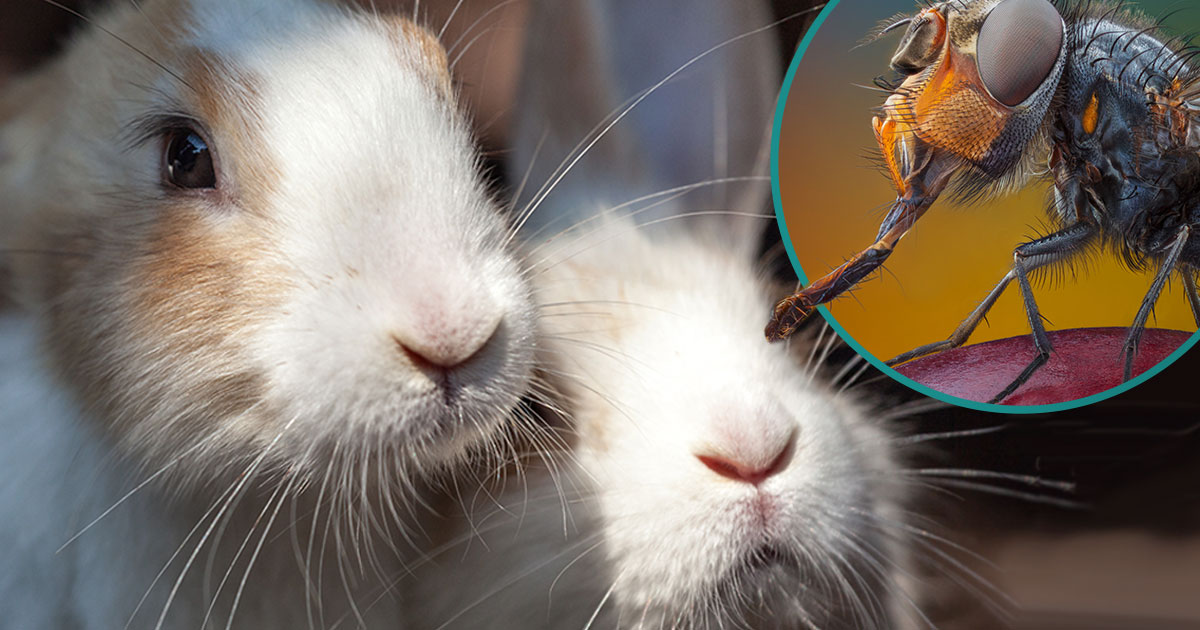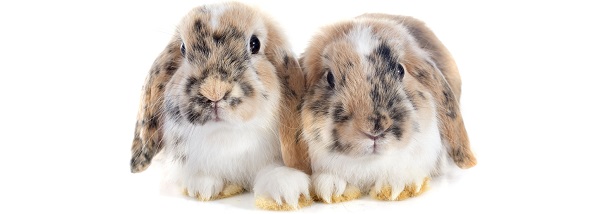One of the most dangerous things that can happen to your rabbit is flystrike and fly strikes are most common during warm weather. You don’t have to be living in a dirty house to be exposed to flies, even the cleanest house can have a fly easily slip in through an open door or window,
Now couple that with a rabbit who might have a messy bum, food stuck in their fur, a newly extracted tooth, or an open cut then they can easily fall victim to flies, be it your regular house fly or any other species. The injured or messy area is what attracts the flies, but they don’t necessarily lay their eggs in that area. The eggs look like an off-white patch on the rabbit’s fur and when they hatch, the maggots automatically move towards the injured or messy area, burrow themselves in, and basically eat their victim alive.
Maggots don’t need a huge cut to settle themselves in, even the tiniest cut is enough for them to gain access under the skin where they burrow themselves in deeper and eat away the flesh.
Where maggots and rabbits are concerned, they need to be flushed out immediately otherwise they will get in too deep, and then there is no saving your bunnies’ life from their flesh-eating monsters. Between the chances of infection and tissue damage, maggots leave a lot of harm in their wake which can prove to be life-threatening.
How to detect maggots:

You’ll need to be super vigilant if there is the slightest chance that your rabbit is vulnerable to flies and maggots. The first and foremost thing to do is to regularly inspect and groom your rabbit. Keep an eye out for egg patches and in case you do find one, use the help of a flea comb to remove them. Similarly, vinegar is said to be useful in killing eggs, but it isn’t the most sought out solution. The best course of action to take is removal.
In case you don’t know what maggots look like, they are white tiny worms and they come in hundreds. If you spot some on the surface of your rabbit’s fur you best believe that they are present under the surface as well. You can check by creating a rippling action under your rabbit’s skin.
How to remove maggots from your rabbit?

To treat your rabbit, no maggot should be left behind. Each and every maggot has to be removed and killed. Otherwise, the maggots will find a way to burrow back inside at the first chance they can get.
You’ll need to keep an eye out for the slightest sign of movement on your rabbit’s fur, especially near the vulnerable area. Also, make sure to inspect other parts of your rabbits’ fur to ensure the maggots haven’t spread or hatched elsewhere.
Note that you will need to do all of these and simultaneously consult your vet. Maggots kill their victims as soon as within the first 24 hours and your vet might have to flush them depending on how serious the situation is and may have to prescribe antibiotics as well.
Symptoms of maggots infestation

One of the easiest and most important ways to keep an eye out and prevent flystrike from happening and becoming a serious threat is to keep a check out for maggots or eggs on their fur or for even the slightest indication of their presence.
Nevertheless, there are some other symptoms to keep an eye out for:
- Loss of appetite
- Digging into a corner
- Acting quieter than usual
- Lack of willingness to move and signs of lethargy
Treating Flystrike:

At the first indication of eggs or maggots being present on your rabbit’s fur, there should be no delay in getting medical help for emergency treatment. Rabbits suffering from flystrike are in extreme pain and shock and so make sure you handle them with utmost care especially when picking them up. Also, make sure to keep them away from water.
For treatment, your rabbit is either sedated or put under anesthetics by the vet for them to be able to fully examine them. A course of antibiotics will be administered to prevent the recurrence of the infection and to prevent secondary infection. Anti-inflammatory and painkiller medicines may also be given.
The good news is if treated early on, your rabbit can make a full recovery.
Prevention from maggots

You can easily prevent flystrike from affecting your rabbit with proper prevention techniques. Make sure you groom your rabbit regularly which will in turn help keep an eye out for any indications especially around the bottom and tail. Be extra vigilant during the summers.
One way to keep flies away from your rabbit is by ensuring that your rabbit has fresh bedding and that its hutch is clean. Replace the litter and bedding daily and cleaning should be done every 12 days at the most. Also, make sure you use pet-friendly disinfectants.
Pay a close eye on the diet as well. Feeding your rabbit hay and the right amount of vegetables and hay will keep their weight in check and prevent the excessive production of cecotrophy.
Keep an eye out for any open wounds or sores and make sure to clean them and keep them dry. Older rabbits are more prone to arthritis or large skin folds and so take extra precaution in keeping this skin clean and dry. The area around the bottom and tail of long-haired breeds should be trimmed with care in the summers to prevent the building up of urine and waste.
Conclusion
To protect your rabbit from flystrike, the most important thing is maintaining proper hygiene and being vigilant. Flystrike is not something that should be taken with ease, if left for too long maggots will practically eat your rabbit to death. While working on home treatments, make sure to consult the vet as well.
